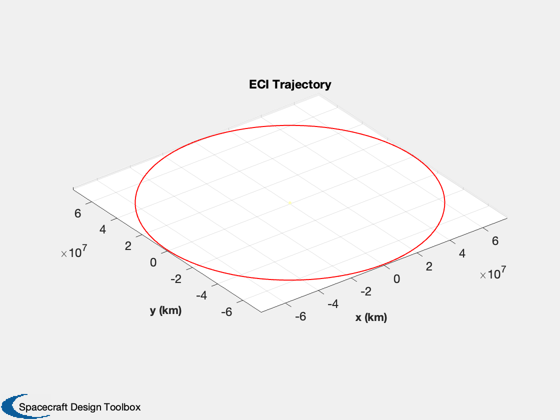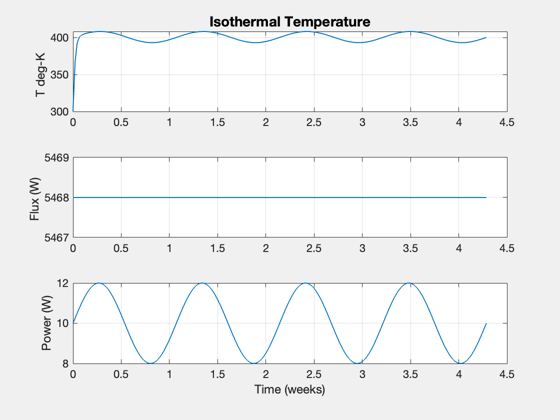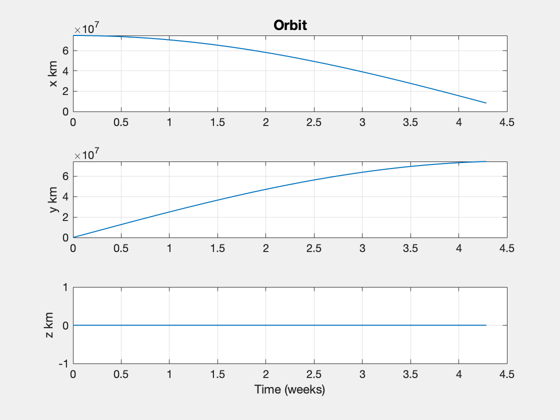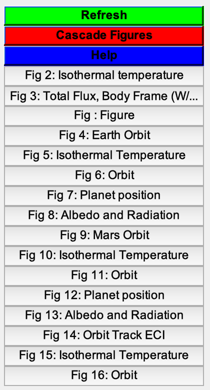Contents
Isothermal satellite simulation
An isothermal model is useful for preliminary estimates of radiator area. This simulation uses the almanac to compute solar flux, albedo and radiation around any planet or in heliocentric orbit.
% See also: PltOrbit, Isothermal %-------------------------------------------------------------------------- % Copyright (c) 2025 Princeton Satellite Systems, Inc. % All rights reserved. %--------------------------------------------------------------------------
Isothermal model data
This appoximates a CubeSat
% Spacecraft properties density = 2700; % kg/m3 mass = density*0.1^3; % Data structure d = Isothermal; d.aR = .02; d.aS = .01; % 1/6 of a cube at any one time d.alpha = 0.3; d.epsR = 0.9; d.t0 = 300; d.cP = 900; d.m = mass;
Isothermal model in Earth orbit
% Define and plot hOrb = 370; % km el = [6378+370 pi/2 0 0 0 0]; n = 200; jD = Date2JD([2007 3 20 0 0 ]) + linspace(0,1,n); PltOrbit(el,jD(1)) % Define a power model a = linspace(0,8*pi,n); d.p = 10*(1 + 0.2*sin(a)); % Compute the temperature Isothermal( el, 'earth', d, jD )
ans =
Figure (PlotPSS) with properties:
Number: 4
Name: 'Earth Orbit'
Color: [0.94 0.94 0.94]
Position: [468 345 560 420]
Units: 'pixels'
Use GET to show all properties
Isothermal: earth
Planet radius = 6378.14 km
Planet albedo = 0.39
Planet radiation = 429.41 W
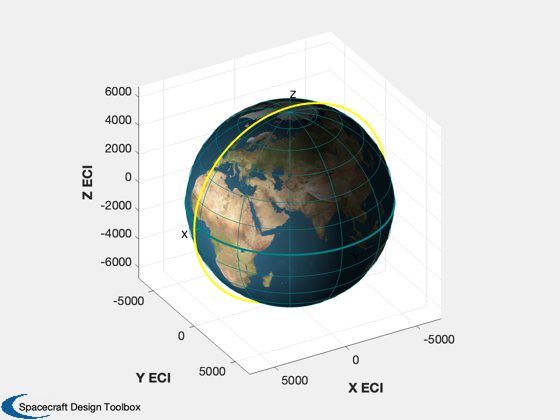
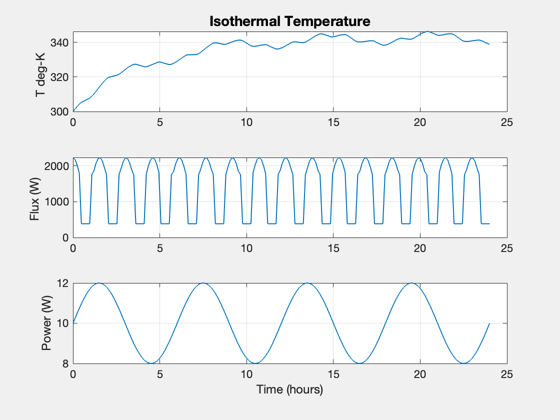
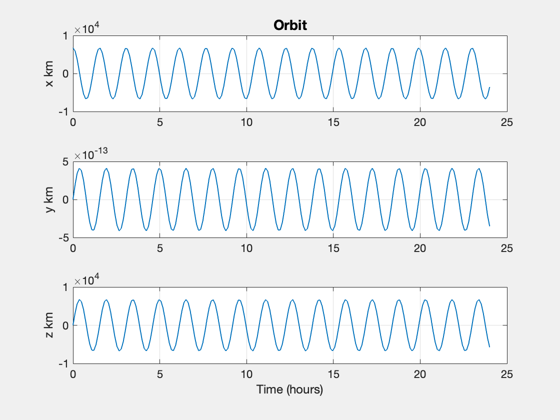
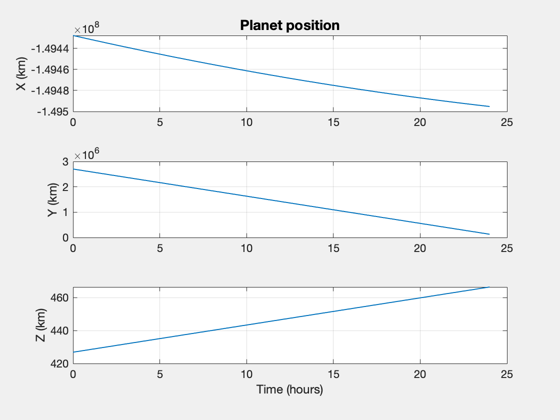
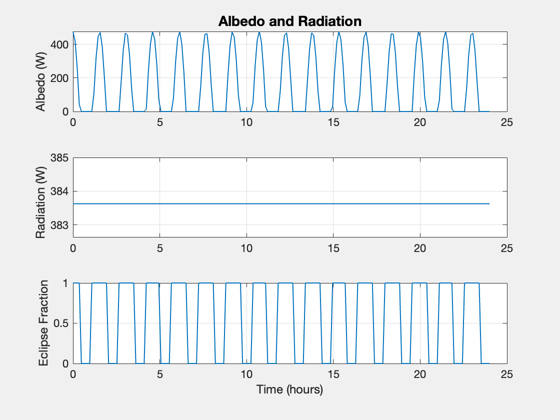
Mars orbit at the same altitude
el = [3397+hOrb pi/4 0 0 0 0]; PltOrbit(el,jD(1),[],'Mars') Isothermal( el, 'mars', d, jD )
ans =
Figure (PlotPSS) with properties:
Number: 9
Name: 'Mars Orbit'
Color: [0.94 0.94 0.94]
Position: [468 345 560 420]
Units: 'pixels'
Use GET to show all properties
Isothermal: mars
Planet radius = 3397.00 km
Planet albedo = 0.16
Planet radiation = 523.64 W
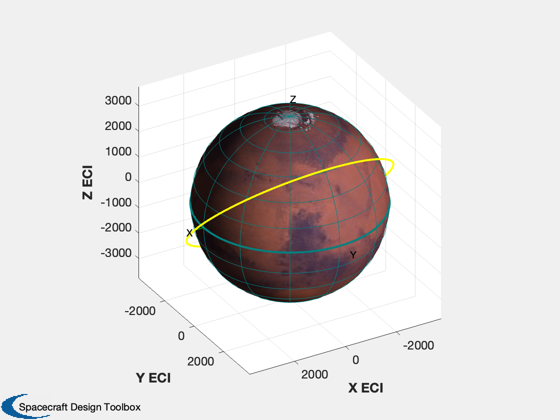
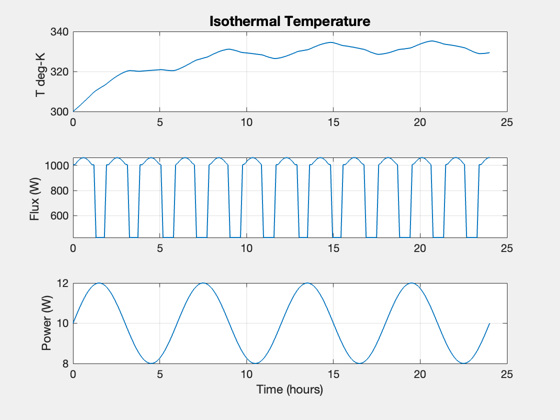
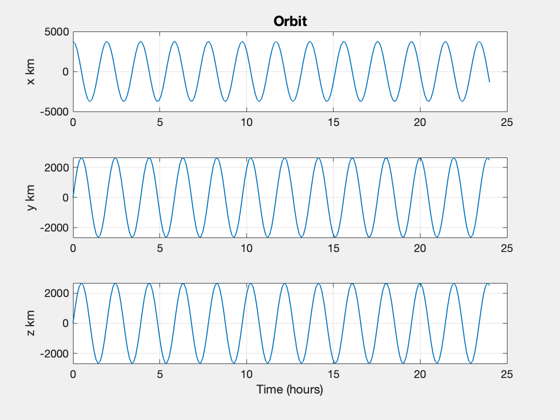
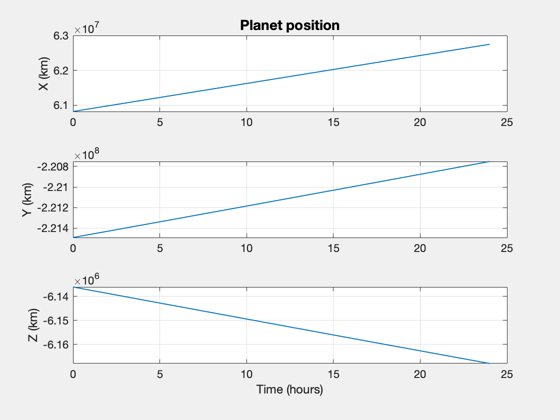
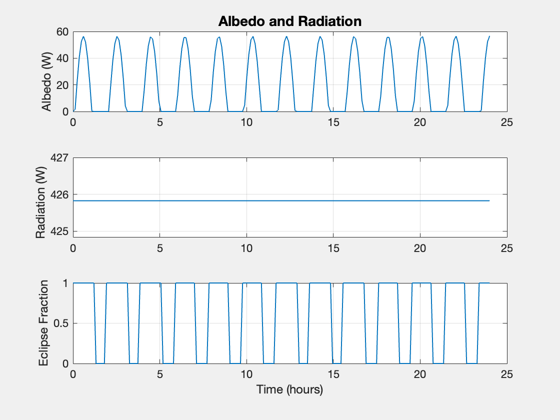
Heliocentric
el = [0.5*Constant('au') 0 0 0 0 0]; OrbTrackECI3D( el, 'sun' ) jD = Date2JD([2007 3 20 0 0 ]) + linspace(0,30,n); Isothermal( el, 'sun', d, jD ) Figui; %-------------------------------------- % $Id: 68c073893806d5cdc6ebe391abea29be54bdad1d $
In heliocentric orbit
